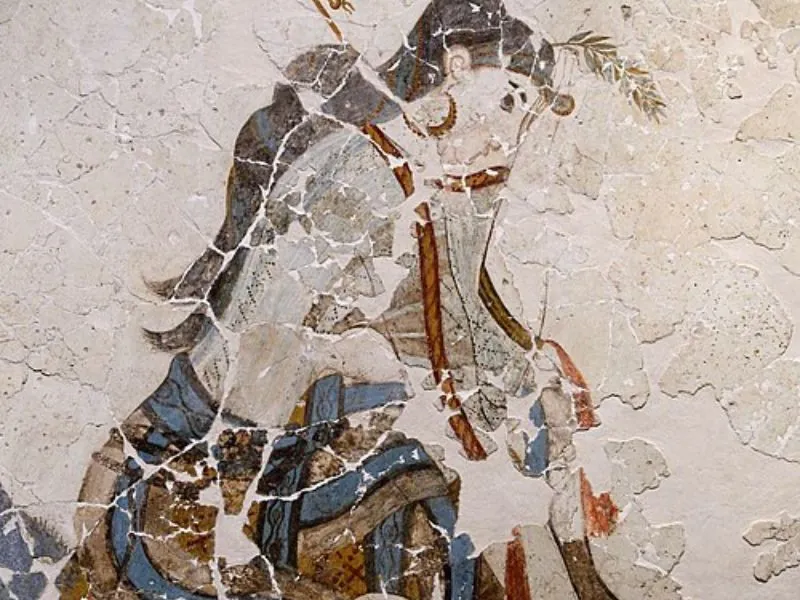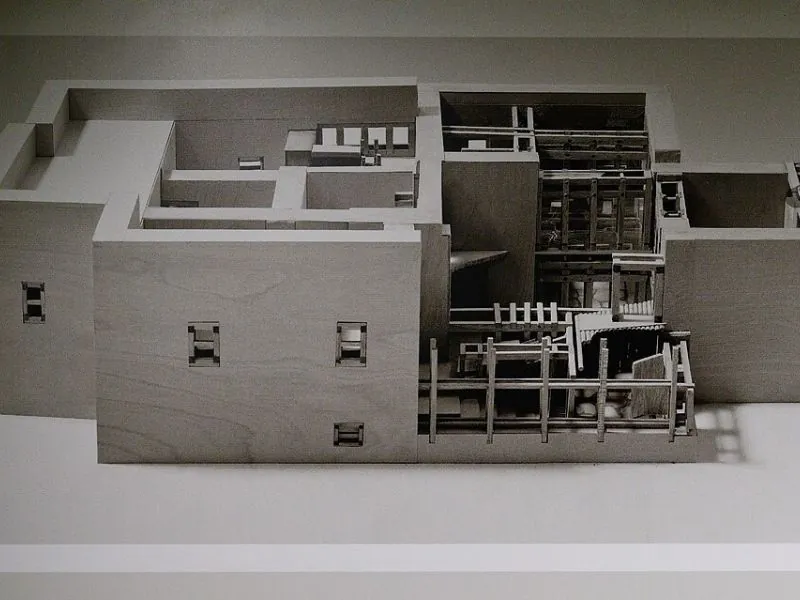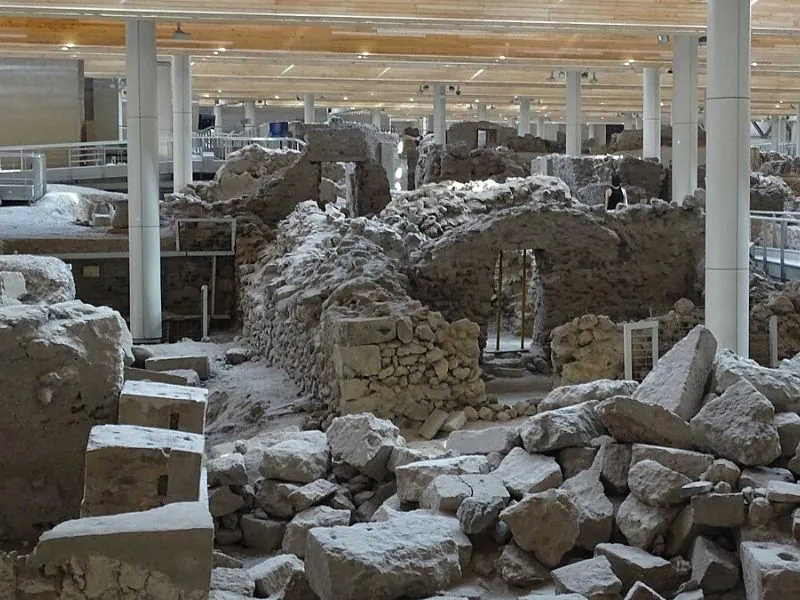Table of Contents
Introduction
Blending art, architecture, and ritual, the sacred world of the Minoans emerges powerfully at Akrotiri. Embedded within private homes and public buildings, Religion of Akrotiri shaped daily life and spiritual identity.
Over centuries, excavations have revealed shrines, ritual objects, and frescoes that illuminate how the island’s Bronze Age inhabitants worshipped, celebrated, and connected with the divine.
Sacred Corners in Daily Life
Even private residences at Akrotiri included dedicated spaces for worship—small altars and sanctuaries integrated into households. Notably, in the so‑called House of Thrania, archaeologists discovered marble figurines and pottery linked to domestic cults.
These intimate sanctuaries featured dedicated nooks for offerings, indicating that religion of Akrotiri was not confined to grand temples—it permeated homes, with daily devotions shaping rhythms of domestic life.
Public Ritual Buildings: Xeste Centers
Xeste 3 stands out as Akrotiri’s leading ceremonial center. This multi‑story structure, discovered beneath volcanic ash, contains a lustral basin used for purification and initiation rites, vibrant frescoes depicting priestesses and saffron harvesters, and cult iconography.
Ritual Objects and Symbolism
Material culture offers further insight into belief systems. Libation vessels—or rhytons—shaped as animals, found throughout Akrotiri, were used for pouring offerings during ceremonies, underscoring sacrificial practices.
Figurines, horns of consecration, and altars carried clear symbolism: animals, female worshippers, saffron flowers, and divine icons pointed toward a fertility-centered ethos. These ritual paraphernalia confirm how religion of Akrotiri interlaced with agriculture, gender roles, and mythic identities.
Communal Ceremonies and Seasonal Festivals
Festivals played a profound role in social cohesion. Archaeologists suggest that rituals tied to agricultural cycles—such as saffron gathering—were commemorated in frescoed ceremonies.
Public plazas and communal spaces, especially around xestē buildings, hosted community gatherings, processions, and ceremonies. Such events reflect the central position of Religion of Akrotiri in maintaining collective identity and seasonal rhythms.
Religion of Akrotiri and Wider Aegean Practices
Sacred traditions at Akrotiri fit within a broader Aegean context. The island’s sanctuaries resemble the peak sanctuaries and caves of Minoan Crete, linking Akrotiri to mainland religious structures.
Frescoes depicting female deities and animal symbolism bear striking parallels to the famed Minoan “Potnia Theron”—the Mistress of Animals—underlining shared motifs across the region. The convergence of iconography and ritual architecture underscores how religion of Akrotiri was part of an integrated Aegean belief system.
Conclusion
From private altars to public frescoed halls, religion of Akrotiri reveals a world where spirituality flowed through domestic routines, seasonal celebrations, and community rituals. This deeply embedded religious landscape shows that worship on Bronze Age Santorini was not peripheral—it was central to cultural, environmental, and social life.
For modern travelers visiting Santorini, these sacred spaces offer a direct encounter with ancient faith and human devotion. Discovering them today means stepping into ancient footsteps and witnessing how ritual shaped identities millennia ago.




